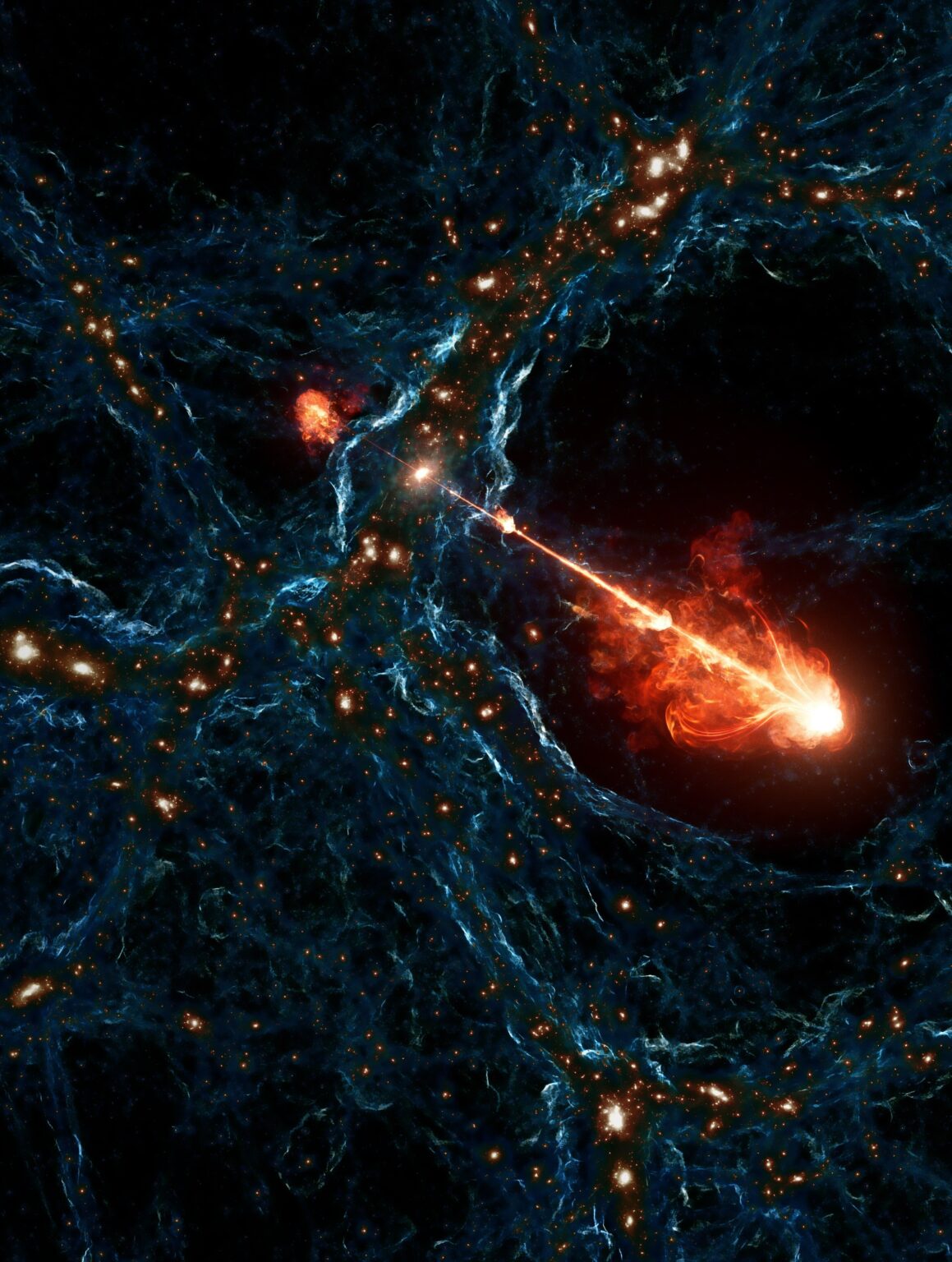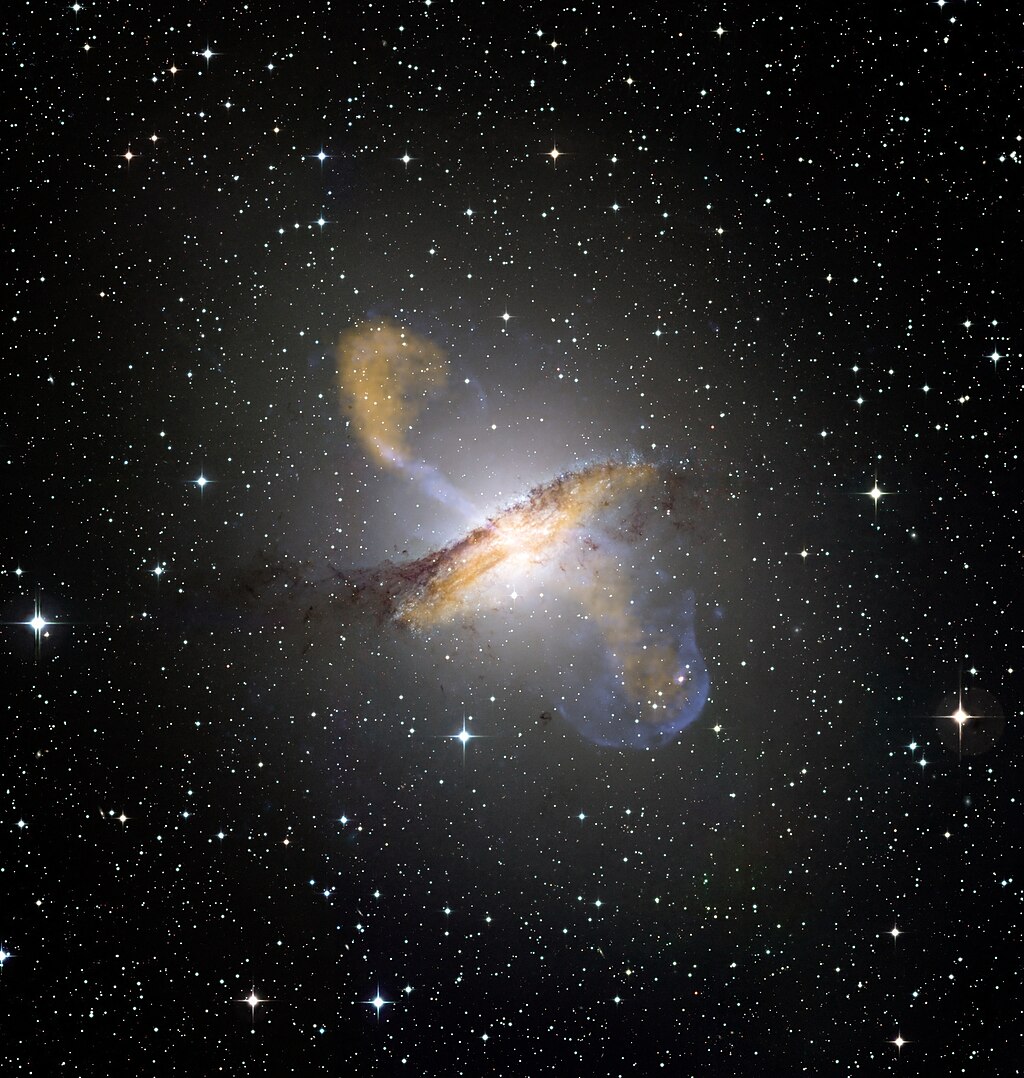Astronomers at California Technological University have discovered the largest pair of black hole jets ever observed. It’s 23 million light-years across. This is equivalent to 140 galaxies like our Milky Way arranged one after another.

The jet system was named Porphyrion, after a giant from Greek mythology. Its source is a huge galaxy ten times larger than our own. It is located at a distance of 7.5 billion light years from Earth. At its center is a supermassive black hole that actively absorbs matter. This process is accompanied by the formation of giant plasma flows that are ejected along its rotation axis. Their total power is equivalent to trillions of Suns.
Prior to Porphyrion’s discovery, the largest confirmed jet system was Alcyoneus, also named after a giant from Greek mythology. It was discovered in 2022 by the same research team as Porphyrion. Alcyoneus covers a region of space equivalent to about 100 Milky Ways. By comparison, the nearest large jet system to Earth, created by the Centaurus A galaxy, spans 10 Milky Ways.
Porphyrion was discovered using the LOFAR radio telescope. Before its observations, astronomers had known hundreds of megajet systems, but they were generally considered quite rare objects. However, LOFAR was able to detect a huge hidden population of more than 10,000 such structures.

According to the researchers, this suggests that giant jets may have had a greater influence on the formation of galaxies in the young Universe than previously thought. Porphyrion existed in an earlier era when galaxies were closer together than they are now. This means that huge jets like Porphyrion could have a much greater impact on the cosmic web (as the threads connecting and feeding galaxies are called) compared to the jets in our local Universe. They carried huge amounts of energy that affected the growth of both the host galaxies and other galaxies near them.
At the same time, so far astronomers don’t know exactly how jets managed to grow to such huge sizes without destabilizing. During the study, they were unable to find anything special in the jets’ environment that could explain their gigantic stature. According to popular theory, this requires an unusually long and stable regime of “feeding” the black hole, so that it would be active for a billion years and its jets would remain directed in the same direction for all that time.
According to Phys.org


